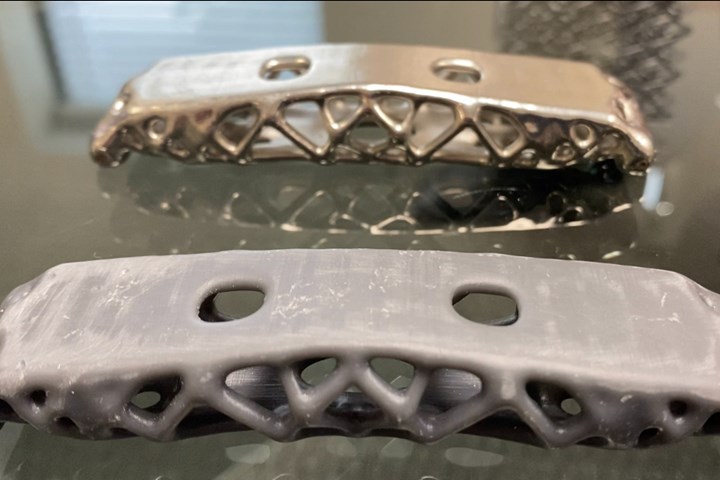Plating Additively Manufactured Plastic Parts
Using electroplating to enhance the structural properties of 3D printed parts.

RePliForm Inc. (Halethorpe, Md.) utilizes electroplating for more than just a final finish. The company has been a pioneer in electroplating non-conductive materials for more than 20 years, exploring ways to adapt electroplating processes to a variety of materials and complex geometries. The company worked with stereolithography (SLA) 3D printed parts and used electroplating to enhance the structural properties, effectively creating a metal-clad composite.
Related Content
-
Innovation in Plating on Plastic
Plating on advanced plastics solution offers improved adhesion, temperature resistance and cost savings.
-
How to Maximize Nickel Plating Performance
The advantages of boric acid-free nickel plating include allowing manufacturers who utilize nickel plating to keep up the ever-changing regulatory policies and support sustainability efforts.
-
Successful South African Plater Beating the Odds
Remaining focused on quality and reliability, Team Plating Works stays profitable in a volatile and challenging economy.













